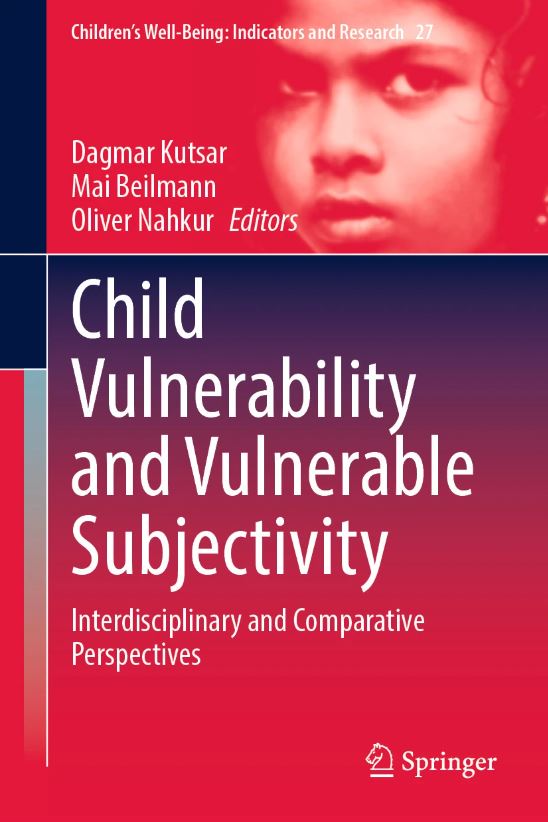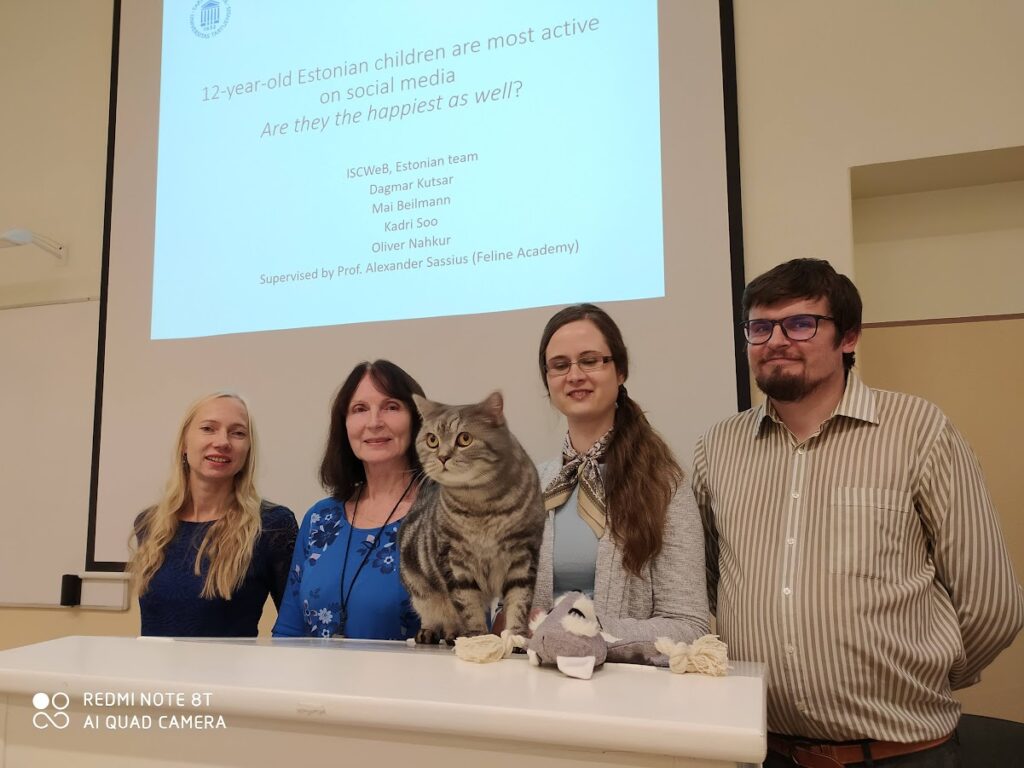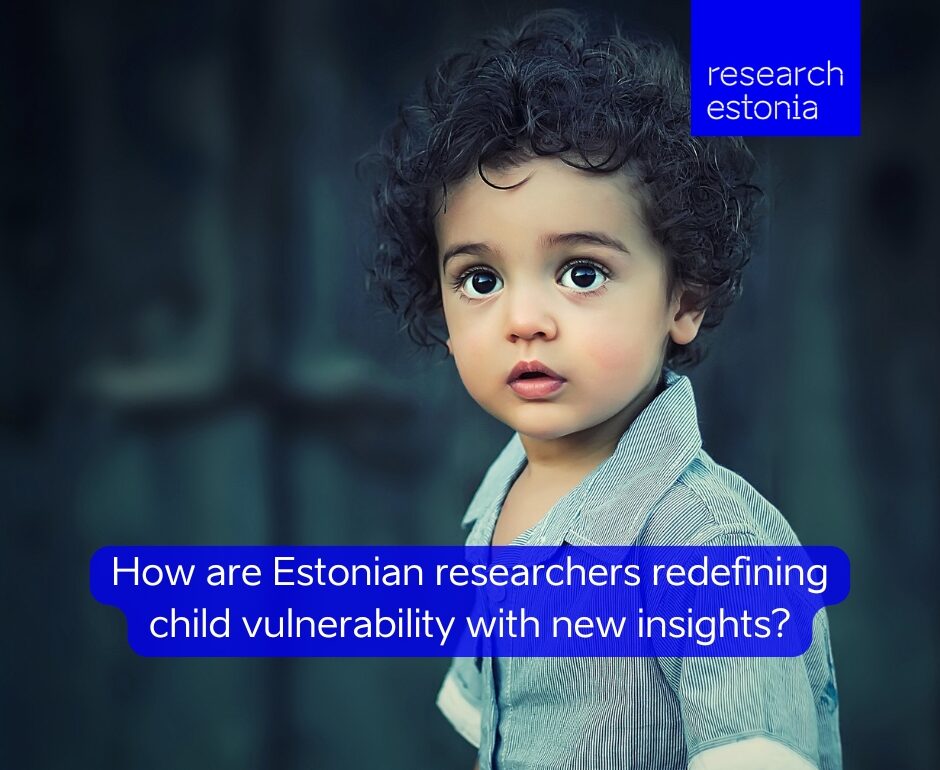Table of Contents
Milestones in child vulnerability research

Researchers at the University of Tartu in Estonia recently cleared two milestones related to the study of child vulnerability. The first was the conclusion at the end of June of a four-year, €683,000 effort backed by the Estonian Research Council (ETAG) to explore vulnerability in childhood and vulnerable subjectivity using an interdisciplinary, comparative perspective.
And the second was the publication of a book called Child Vulnerability and Vulnerable Subjectivity: Interdisciplinary and Comparative Perspectives by Springer, a Berlin-based, multinational publisher of science and research books and journals, to present the main findings of the project.
Dagmar Kutsar’s research journey
For Dagmar Kutsar, an associate professor in social policy at the Institute of Social Studies, the culmination of the project and the publication of its findings is a capstone for more than a decade’s worth of interest in studying subjective well-being and vulnerability in children. The importance to study vulneraility was driven home during the COVID-19 Pandemic and continues to be raised because of the ongoing Russo-Ukrainian War. Yet creating an academic framework to study it was complex, Kutsar said.
Kutsar’s affiliation with the University of Tartu began in the late 1970s. She received her bachelor’s in psychology there in 1975 and joined as a research fellow in 1977. In 1995, she gained her PhD. Throughout her career, Kutsar has focused on studying the family, childhood, as well as welfare policies. She credits both the International Society for Child Indicators (ISCI) to study children’s perspectives about their life in different life domains and the United Nations Convention on the Rights of the Child, signed in 1989, as particular catalysts for her research into children’s subjective well-being, vulnerability and rights.

Challenges in studying child vulnerability
But while there is a social need to study children — to better inform welfare policies, for instance — the subject is plagued with challenges. For one, children are not seen as a reliable source of data. “They have fantasies, the adults often conclude,” said Kutsar, “however, children belong to another generation and see things in a different way.” They also have different life experiences and interpretations of relationships. For this reason, it can be difficult for adults to understand children’s perspectives, especially when their opinions differ and cause adults uncomfortable feelings. It is also difficult to admit that adults as well as children sometimes make mistakes and spoil relationships.
To better study child vulnerability, the researchers at the University of Tartu cast a wider net, bringing in sociological approaches, as well as expertise in psychology, education science, law, and social work. This allowed them to look at children’s perspectives through different lenses.
“The topic is very broad,” Kutsar said, “and we wanted to show how well-being and also vulnerability are created and preserved in relationships.”
The researchers combined qualitative and quantitative approaches to do so, developing mixed methods with colleagues. They also had to contend with external pressures, as the project was postponed for six months because of the COVID-19 Pandemic. Officially, it was slated to end on 31 December 2023, Kutsar said, but this was pushed forward by six months. It did however give the researchers the time to finalize the editing of what would become the newly published book.
According to the book, its aim is to discuss how vulnerability develops within subjects in relationships, is created, and empowered; to contribute to measuring child vulnerability in a cross-country, comparative perspective; and to analyze the ethical considerations of involving children with trauma in researching sensitive topics. Kutsar was an editor of the book, as were Institute of Social Studies researchers Oliver Nahkur and Mai Beilmann.

Innovative approaches to understanding vulnerability
The book is not just about findings but about approaches, Kutsar said. It provides other researchers with conceptual models for looking at childhood vulnerability in different life domains, such as within the family, in schools, within the legal and healthcare system, and also in the digital world. Different chapters in the book specifically address these different areas.
The book also explores how vulnerability develops during childhood, as children relate to others, especially adults in positions of authority, and how it is created at a systemic level.
There are two specific chapters focused on the impact of the pandemic and the Russo-Ukrainian War on child vulnerability. To examine the impact of the pandemic, the ISCI initiated an International Supplementary Study of Children’s Well-being (ISCWeB), which is an add-on to the project to examine how the universal increase in vulnerability works both locally and internationally from a child’s perspective. The ERC awarded a grant to a Ukrainian refugee researcher to work with the project team to explore expressions of universal vulnerability among Ukrainian refugee children in Estonia.
Turning Stories into Strength
Findings from both additional studies are published in this Springer book. There is also the introduction of a new method called Life Story Work for reducing child vulnerability in Estonian substitute care that can be used to support the development of a positive identity among such children, Kutsar said.
The issue of subjectivity is also addressed, as subjectivity itself is a phenomenon in vulnerability. “It’s about how we in relationships perceive others and how they are treating us,” she said.Overall, the book provides an overview of how to increase child well-being by decreasing vulnerabilities and building resilience, according to Kutsar.
Ideally, other researchers interested in the subject are the target audience for the new book, she added. But there is more runway for this research. Kutsar and colleagues are already looking to the future and have made proposals for follow-on projects.
“We want to focus on proactive and intervention policies,” said Kutsar, “to be able to better take notice of positive trends, and to empower these positive trends by supporting such policies in the future. We also want to demonstrate the power of investing in a good childhood from the perspective of a future society.”
This article is written by Justin Petrone. This article was funded by the European Regional Development Fund through Estonian Research Council.
If unraveling the mysteries of the mind has sparked your curiosity, think your way over to our next article on how psychology shapes everyday behavior! Read more about how Personality traits can predict willingness to vaccinate!
 Back
Back



